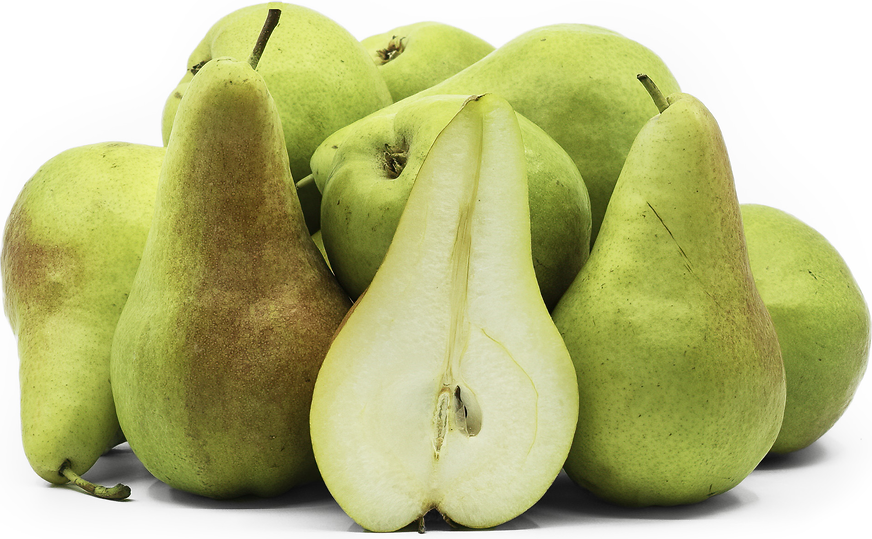


Concorde Pears
Inventory, lb : 0
Description/Taste
Concorde pears are small to medium in size with a large, round base that tapers into a long narrow, and pointed neck. The smooth skin is green-yellow with patches of red blushing and a golden-brown russeting connecting to a brown stem. The white to ivory flesh is dense, firm, and moist. When ripe, Concorde pears may still have a somewhat firm consistency and are aromatic, juicy, and sweet with floral notes and hints of vanilla.
Seasons/Availability
Concorde pears are available in the fall through winter.
Current Facts
Concorde pears, botanically classified as Pyrus communis, are a hybrid variety that are members of the Rosaceae family along with peaches, apples, and apricots. Concorde pears are a cross between the comice and the conference pear and were developed in an attempt to take the best attributes of those varieties and combine them into one fruit. Known for their crisp but juicy flesh, Concorde pears can be consumed when crunchy and firm or left to ripen and soften fully. They are one of the most versatile pears and can be used in both raw or cooked preparations.
Nutritional Value
Concorde pears contain some antioxidants, fiber, and vitamin C.
Applications
Concorde pears are best suited for both raw and cooked applications such as poaching, baking, grilling, and sautéing. They can be consumed fresh out-of-hand, sliced for salads or cheese boards, chopped in salsa, and are ideal for appetizers as they do not oxidize immediately. They can also be used to top cakes and tarts, paired with pork tenderloin, lamb, or strong blue cheeses, sliced as a pizza topping, or mixed in with oatmeal or puddings. Concorde pears compliment white fish, lamb, pork, beef, and chicken, spices such as cumin, curry powder, cinnamon, and clove, cilantro, lime juice, red onion, garlic, gorgonzola, balsamic vinegar, browned butter, walnuts, almonds, hazelnuts, delicata squash, arugula, and pomegranate seeds. They will keep up to two months when stored in the refrigerator.
Ethnic/Cultural Info
Concorde pears are slow to turn brown, also known as oxidizing, which makes them ideal for preparations where they will be left out for a long period of time. They are often used in appetizers or in salads during catered events to maintain a pleasant looking dish. Concorde pears also ripen slower than other pear varieties allowing them to appeal to a diverse range of consumers because they can be eaten when crunchy or kept on the counter to develop a softer texture.
Geography/History
Concorde pears are native to England and were first bred in 1977 at the East Malling research station in Kent. Today Concorde pears can be found at specialty grocers and farmers markets in England and also in parts of the Northwest United States.

Recipe Ideas
Recipes that include Concorde Pears. One
Podcasts



